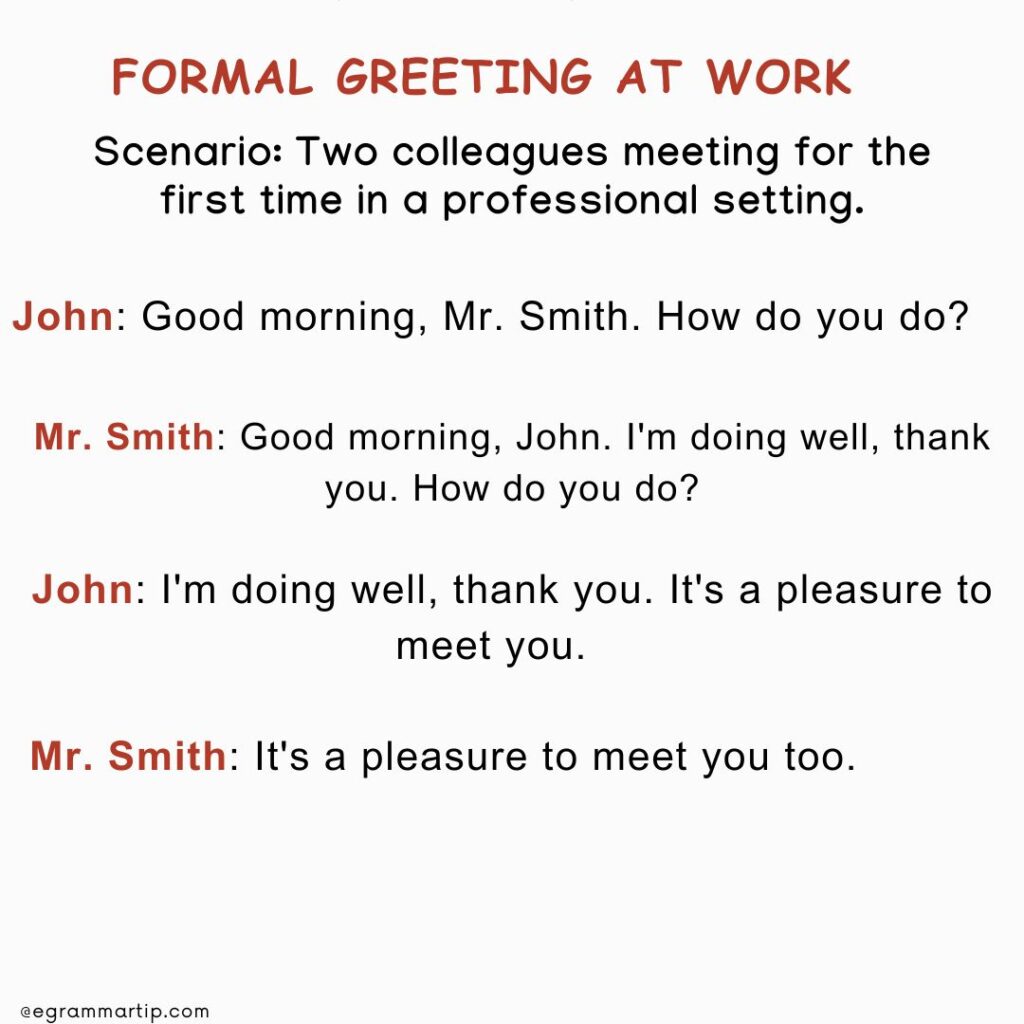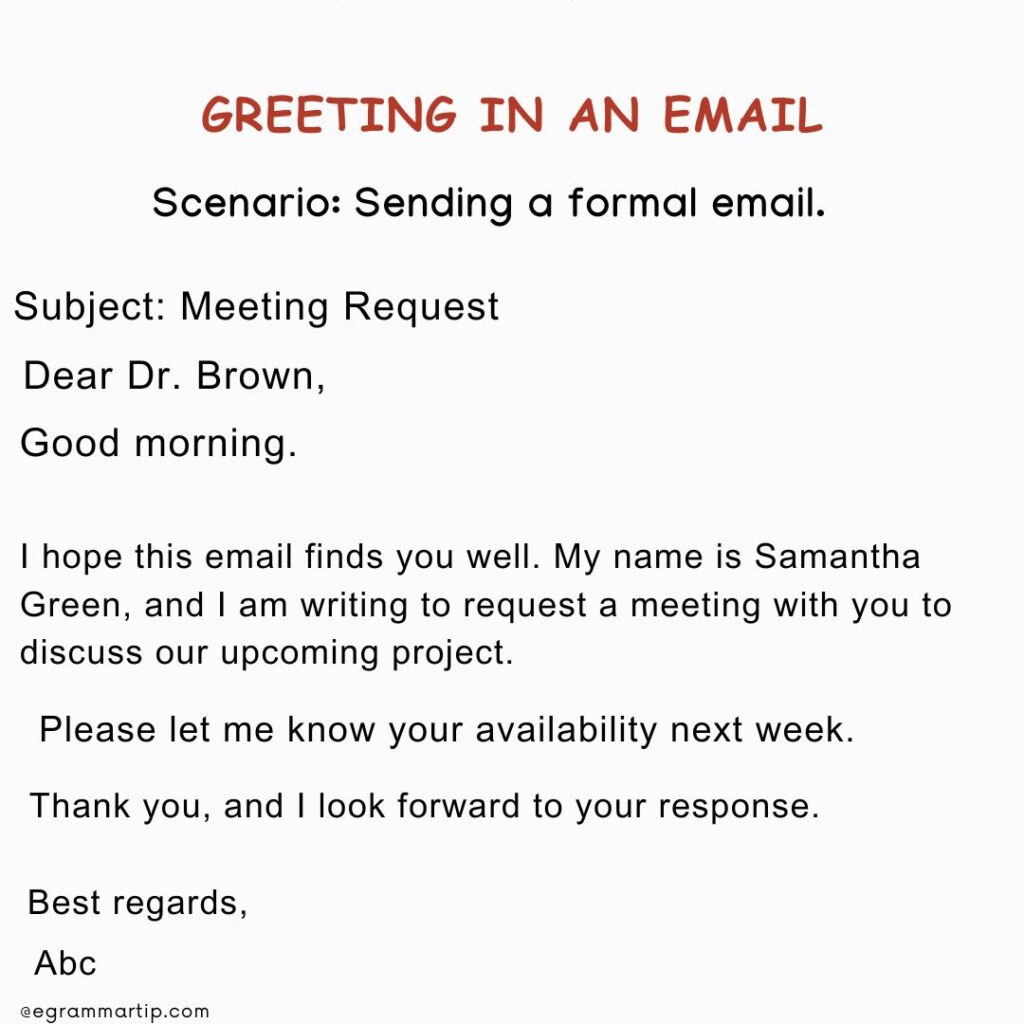
Greetings and introductions are the starting point of every good conversation. Whether you’re meeting someone new or catching up with a friend, knowing how to greet and introduce yourself in English is super important. Let’s dive into some easy tips and tricks to help you master these essential skills.
Why Greetings and Introductions Matter?
First impressions are everything. A friendly greeting or a confident introduction can set the tone for a positive interaction. They help break the ice and show that you’re polite and interested in the person you’re talking to.In English, greetings can be formal or informal, and their use often depends on the time of day, the social context, and the relationship between the speakers. Let’s explore these aspects in detail:
1. Basic Greetings
Hello / Hi
“Hello” and “Hi” are universal greetings suitable for any time of day. “Hello” is slightly more formal than “Hi.”
Examples:
•Hello, how are you?
•Hi, nice to meet you!
Good Morning / Good Afternoon / Good Evening
These greetings are time-specific and slightly more formal.
•Good morning is used from dawn until noon.
•Good afternoon is used from noon until around 6 PM.
•Good evening is used after 6 PM and up until bedtime.
Examples:
•Good morning! Did you sleep well?
•Good afternoon, how’s your day going?
•Good evening, are you enjoying the event?
Goodbye
“Goodbye” is a standard farewell phrase suitable for any time of day.
Examples:
•Goodbye, see you tomorrow!
•Goodbye, take care
2. Informal Greetings
Hey / What’s up? / How’s it going?
•”Hey” is a casual alternative to “Hi.”
•”What’s up?” and “How’s it going?” are informal ways to ask how someone is doing.
Examples:
•Hey, how have you been?
•What’s up? Any plans for the weekend?
•How’s it going?
Catch you later / See you later / Take care
These phrases are informal ways to say goodbye.
Examples:
•Catch you later!
•See you later!
•Take care!
3. Formal Greetings
Good Morning / Good Afternoon / Good Evening (Extended)
These can be extended with polite inquiries or remarks.
Example:
•Good morning, Mr. Smith. How are you today?
•Good afternoon, everyone. Thank you for coming.
How do you do?
A very formal greeting often used in professional settings or when meeting someone for the first time.
Example:
How do you do? I’m pleased to meet you.
Pleasure to meet you / Nice to meet you
It is used when meeting someone for the first time in a formal setting.
Examples:
•It’s a pleasure to meet you, Mr. Johnson.
•Nice to meet you, Ms. Davis.
4. Contextual Use of Greetings
Context Matters
Workplace: In professional settings, greetings are generally more formal. “Good morning” or “Good afternoon” followed by the person’s title (Mr., Mrs., Dr., etc.) is appropriate.
Friends and family : Informal greetings like “Hi,” “Hey,” or “What’s up?” are more common.
Public and Social Events: Depending on the formality of the event, you might use a mix of formal and informal greetings.
Cultural Considerations
•In some cultures, people might greet each other with a handshake, hug, or kiss on the cheek. In English-speaking countries, a handshake is standard in formal settings, while hugs and cheek kisses are more common among close friends and family.
•It’s important to be aware of and respect these cultural nuances to ensure your greetings are appropriate.
5. Greeting Variations and Responses
Variations in Greetings
•Morning! / Afternoon! / Evening! (Shortened versions of formal greetings)
•Hiya! / Howdy! (Informal, regional variations in some English-speaking areas)
•Yo! (Very informal, often used among younger people)
Responses to Greetings
When someone greets you, it’s polite to respond. Here are some examples:
•Hi, how are you? -> I’m good, thank you. And you?
•Good morning! -> Good morning! How’s everything?
•What’s up? -> Not much, just working. How about you?
6. Practicing Greetings
•Role-Playing
Practice greetings through role-playing. Pair up with a friend or language partner and simulate different scenarios (e.g., meeting someone at a café, greeting a colleague at work).
•Listening and Repeating
Listen to native speakers through movies, TV shows, or podcasts, and repeat the greetings and responses.
•Recording Yourself
Record yourself practicing greetings and play it back to identify areas for improvement.
•Daily Practice
Make it a habit to greet people in English daily, whether at home, work, or social gatherings.
Conclusion
Mastering greetings in English is a crucial first step in becoming fluent and confident in the language. Understanding the context, formality, and cultural nuances will help you choose the right greeting for any situation. Practice regularly, and soon, these greetings will become second nature. Happy learning!



Thanks so much for this lesson.